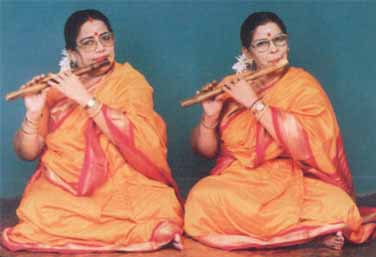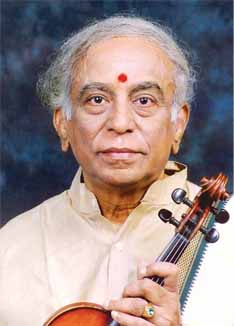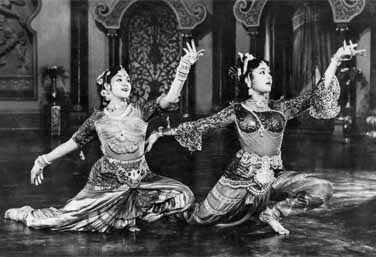NEWS & NOTES

Workshop on aesthetics of Koodiyattam - K.K. GOPALAKRISHNAN
The Koodiyattam Kendra of the Sangeet Natak Akademi, New Delhi, conducted a four-day workshop on ‘the aesthetics of Kutiyattam’ at Tiruvanantapuram, from 13th to 16th August. Presented more like a residency of day-time lectures and evening performances than a workshop, it had fair audience participation on most days, especially for the performances. Mainly Koodiyattam artists and students attended.
The workshop was inaugurated by Ratan Thiyyam, Vice Chairman of the Sangeet Natak Akademi, also the ex-officio Chairman of the Kutiyattam Kendra. Kavalam Narayana Panikkar, former Chairman of the Kutiyattam Kendra and former Vice Chairman of the Akademi, who chaired the function expressed his resentment against the confined role of the Kendra “as an expensive institution to disburse mere grants to seven or eight private institutions”. Dr. Balashankor Mannath, the Director of the Kutiyattam Kendra, welcomed the audience.
COVER STORY

SIKKIL SISTERS
Torchbearers of tradition - CHARUKESI VISWANATHAN
With flute genius T.R. Mahalingam and his remarkable sishya Sangita Kalanidhi N. Ramani for close relatives (see family tree) on their mother’s side, the sangeeta gnanam of the renowned Sikkil Sisters, flautists, has been no surprise.
Probably the only successful flute duo of their time, certainly the first female pair of instrumentalists in Carnatic music, Sikkil Kunjumani and Neela have continued the vocal style of flute playing that Mali (Sruti 24) launched so memorably during their lifetime, changing the history of the pullankuzhal irreversibly. Before Mali, the Carnatic flute as a concert
instrument owed much to the pioneering efforts of Sarabha Sastri (1872-1904) and the maintenance of that tradition by his sishya parampara of the likes of Palladam Sanjeeva Rao and H. Ramachandra Sastri (see Sruti 67).
“Azhiyur Narayanaswami Iyer was my guru,” reminisced Sikkil Kunjumani, the older of the Sisters. “He was my uncle, residing in Puliyur, near Azhiyur. I was seven or eight then and we had an idol of Krishna playing the flute at home. I used to imitate that with a stick in place of the flute and humming tunes. My father Azhiyur Natesa Iyer noticed that and felt that I had a natural flair for music. He decided to take me to my guru for initiation. It was a bold step as girls those days were never into artistic pursuits. My Periappa Narayanaswami Iyer was also very supportive of the idea. He gave me a short flute. In just two years, he prepared me for a concert. Our servant Tangavelu escorted me everyday to my guru’s house. I had to walk to cover the distance. It would take an hour or so to reach my master’s place. The class would start by eight in the morning. Periappa was impressed by the nada of the flute and played it as his main instrument, though he taught many students vocal, violin and veena. He gave many solo concerts accompanied by our father on the mridanga.”
SPECIAL FEATURE

FROM THE SRUTI ARCHIVES
The Lalgudi legacy (Third and concluding part of the Lalgudi profile) - GOWRI RAMNARAYAN
An unpublished article written in 1985.
The vocal bani on the violin
“Sahitya which is the lifeblood of our music cannot be presented through instrumental music and this is a drawback. Therefore instrumental music, however good, seems to lack variety. To enjoy it, a keener mental attention is needed.”
Jayaraman had been fascinated by Dwaram Venkataswamy Naidu’s violin solos, which were highly popular then. “But there has been further development, a tremendous improvement since that time. The old style had few gamaka graces, relying more on suddha swara-s. There was perfection in technique, but the methods, though correct, were more Western than Indian. Though others had preceded him in giving violin solos, the credit of establishing the concert-worthiness of the violin solo goes to Naidugaru, as far as I know”.
Jayaraman however implies that the same Naidugaru followed the vocal paddhati instead of creating a pattern suited to an instrument alone as Jayaraman has done. Even in his solos, the violinist often played in exactly the same manner the vocalist sang. In a duo, the violin offered the same kind of support as in a vocal concert. But Jayaraman cultivated a style in which the two violins played in perfect unison, sounding as one, following the same pathantara and yet played different roles – both complementary and contrastive. They coupled the bhava of the voice with the virtuosity of a sophisticated stringed instrument. Experience brought insights to discover new tacks to increase the tuning pleasure. These became the Lalgudi bani, now part of a tradition followed by many direct and indirect disciples.
SPECIAL FEATURE

VYJAYANTIMALA BALI - III
She brought lustre to the silver screen - V.A.K. RANGA RAO
I saw Vyjayantimala the film actress first in Bobbili, dancing for the governor of the Madras Presidency, the Maharajah of Bhavnagar, at the behest of my paternal uncle, the Rajah of Bobbili, who in turn was the chief minister in the late 1930s.
I really don’t remember anything of her dance except that she was very young, maybe twelve. My mother and grandmother were excited that she was the daughter of one of their favourite film actresses, Vasundhara Devi. I was hoping that she would do something Latin like her mother in Mangamma Sapatham (1943), a la Carmen Miranda. She did not but somehow that did not disappoint me at all. I must have been impressed.
The whole of South India, and a little later, the nation itself, was struck by her in her debut films, Vazhkai, Jeevitham and Bahar (1949 – Tamil, Telugu, 1951 – Hindi). The dances, choreographed by Hiralal were effervescent and their effectiveness was doubled by this pretty young thing’s grace and flair. It was the rare occasion when a teenager portrayed a teenager. She was paired with heroes ten to twelve years older, T.R. Ramachandran (Tamil, Telugu), Karan Dewan (Hindi). Dewan was no comedian but a treacly hero with thunderous hits (Rattan, 1944) to his
credit. TR was and an experienced one at that. Vyjayantimala stood up to him with elan. Her comedy-timing was perfect, no doubt honed, directed and edited by her mentor M.V. Raman. But it was her dances, backed by simple lyrics, tuneful melodies, and sophisticated taking, that are recalled to this day; that all three films are now available on CD legally, helps.


